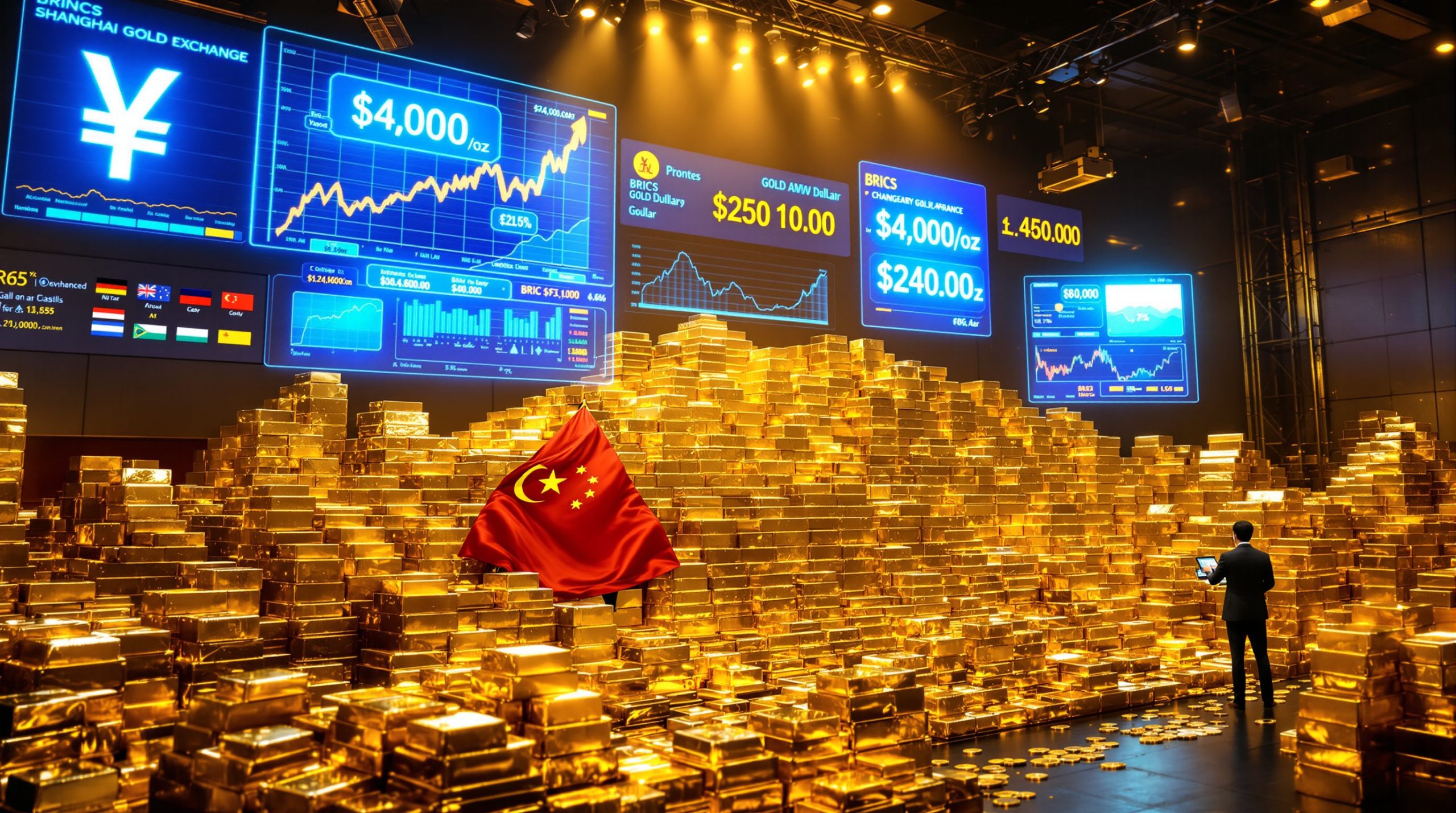How Are Tariff Policies Impacting the Global Aluminum Market?
The aluminum market is navigating through turbulent waters as new tariff policies reshape global trade dynamics. Recent developments have introduced significant uncertainty for producers, traders, and consumers alike, creating ripple effects throughout international supply chains.
Recent Tariff Developments and International Tensions
The United States has implemented substantial policy changes, announcing a 30% tariff on Mexican aluminum products scheduled to take effect on August 1, 2025. This decision has prompted immediate diplomatic engagement, with the Mexican government characterizing the tariffs as "unfair treatment" and initiating high-level negotiations to address the situation.
Similar tensions are emerging across the Atlantic, where European Commission President Ursula von der Leyen has expressed deep concern that the 30% tariff on EU exports "would disrupt important trans-Atlantic supply chains and harm the interests of enterprises and consumers on both sides of the Atlantic." The EU has emphasized its preference for negotiated solutions rather than escalating trade conflicts.
Industry analysts note that these tariffs impact investment markets couldn't come at a more challenging time, as global aluminum markets are already contending with shifting demand patterns and inventory imbalances.
Market Response to Trade Policy Shifts
The immediate market response has manifested in trading pattern adjustments and preliminary inventory shifts. Many producers are reconsidering export strategies, with some exploring alternative markets to minimize tariff exposure. This redistribution of trade flows has begun creating regional supply imbalances, contributing to price volatility across different markets.
A particular concern among market participants is the potential for retaliatory measures. Historical precedents suggest that trade restrictions often trigger countermeasures, which could further complicate the international trading landscape for aluminum and related products.
Trade strategists observe that market participants are adopting increasingly cautious positions, with many postponing significant procurement decisions until policy implications become clearer. This wait-and-see approach is exacerbating existing seasonal demand weakness.
What's Happening with Domestic Aluminum Inventory Levels?
The current inventory situation provides critical context for understanding market dynamics, with recent data pointing to significant accumulation trends that demand careful analysis.
Current Inventory Trends and Data Analysis
According to the latest market intelligence from SMM, domestic electrolytic aluminum ingot inventories have shifted decisively toward accumulation. As of July 14, 2025, inventories in major consumption areas reached 501,000 metric tons, representing a substantial increase of 35,000 metric tons from the previous week.
This domestic inventory growth is mirrored in international markets, with LME aluminum inventory increasing by 4,550 metric tons to 400,300 metric tons on July 11, 2025. The broader trend is even more pronounced when examining monthly figures, with LME aluminum inventory growing by 42,700 metric tons over the past month—an 11.93% increase that signals potential oversupply concerns.
Regional inventory distribution patterns reveal uneven accumulation rates, with central regions experiencing more rapid buildup than coastal areas. This geographic disparity reflects both transportation logistics and regional demand variations that compound the overall inventory challenge.
Factors Contributing to Inventory Accumulation
Several interconnected factors are driving the current inventory expansion:
-
Seasonal demand weakness: Traditional summer slowdown across construction, automotive, and consumer goods sectors has reduced aluminum consumption at a time when production remains relatively stable
-
Production adjustments: The domestic operating capacity of electrolytic aluminum has decreased slightly due to replacement projects, with the proportion of liquid aluminum dropping to 74.78%
-
Production format shift: Manufacturers have increased casting ingot production in response to changing demand patterns, contributing to higher inventory levels
-
Price-sensitive purchasing: Downstream buyers have adopted increasingly cautious procurement strategies, purchasing minimal volumes and avoiding inventory building
-
International trade disruptions: Tariff uncertainties have disrupted established trade flows, leading to temporary inventory accumulation in certain regions
The technical production shift from liquid aluminum (directly used in manufacturing) to cast ingots (which are stored) has been particularly significant. When this production format change combines with cautious downstream purchasing behavior, the result is the pronounced inventory accumulation currently observed across major markets.
What's the Current State of Aluminum Pricing?
Price movements provide essential signals about market conditions, with recent trends reflecting the complex interplay between supply, demand, and policy factors.
Recent Price Movements and Market Sentiment
Aluminum prices have experienced downward pressure and heightened volatility across major trading platforms. On the Shanghai Futures Exchange (SHFE), the most-traded aluminum 2508 contract recently traded within a relatively narrow range of 20,635-20,695 yuan/mt, ultimately closing at 20,645 yuan/mt.
International markets show similar patterns, with LME aluminum prices fluctuating between $2,589.5/mt and $2,614/mt before settling at $2,602/mt. This constrained trading range reflects market uncertainty and conflicting directional signals.
The spot market has registered notable declines, with SMM A00 aluminum reported at 20,790 yuan/mt in East China, representing a decrease of 30 yuan/mt from the previous trading day. This downward movement in physical markets aligns with the futures trend and reinforces the overall bearish sentiment.
Market participants describe current conditions as "in the doldrums," with tariff disruptions and aluminum prices showing limited direction and trading volumes remaining subdued. This price stagnation occurs despite cost-side pressures that would typically support higher valuations, highlighting the significance of demand-side weakness.
Price Differentials Across Regional Markets
One of the most revealing aspects of current market conditions is the emergence of significant regional price differentials:
| Region | Price (yuan/mt) | Change from Previous Day | Discount vs. 2507 Contract |
|---|---|---|---|
| East China | 20,790 | -30 yuan/mt | -70 yuan/mt |
| Central China | 20,660 | -50 yuan/mt | -200 yuan/mt |
| Price Spread (Henan-Shanghai) | -130 yuan/mt | Expanded by 20 yuan/mt | – |
These regional spreads highlight the varied supply-demand dynamics across different parts of the country. In East China, market participants report that "shipments have exceeded spot orders," resulting in softening prices despite the region's traditional premium positioning. Central China has experienced even greater pressure, with prices declining more sharply as consumption weakened in response to price increases, forcing traders to adjust premiums downward.
The expanded Henan-Shanghai price spread (now -130 yuan/mt, widening by 20 yuan/mt) underscores these divergent regional conditions and creates arbitrage opportunities for traders with logistics capabilities to bridge these markets.
How Is the Cost Structure Evolving for Aluminum Producers?
While price pressures mount, producers face an increasingly challenging cost environment that threatens profitability and operational sustainability.
Raw Material and Production Cost Analysis
Production costs for aluminum manufacturers have been trending upward, primarily driven by rising alumina prices. This critical input cost increase comes at a particularly challenging time, as manufacturers struggle to pass these higher costs to downstream buyers in the current weak demand environment.
The cost structure complexity is further magnified by varying efficiency levels across production facilities. Older plants with higher energy intensity face steeper challenges than newer, more efficient operations. Regional energy price differences also create uneven cost pressures, with some production centers enjoying more favorable utility rates than others.
These rising costs, combined with weak selling prices, have compressed profit margins across the production chain. Manufacturers are responding with efficiency initiatives and selective production adjustments, but these measures provide only partial relief from the fundamental cost-price squeeze.
Secondary Aluminum Production Economics
The secondary aluminum sector faces particularly difficult economics, with several factors creating severe operational challenges:
-
Supply constraints: Tightening domestic and overseas aluminum scrap supplies have limited raw material availability for secondary producers
-
Competitive procurement: Intensified competition for scrap materials has developed into what market participants describe as a "scramble for scrap"
-
Cost-price squeeze: Rising production costs amid weak finished product pricing have created unsustainable margins
-
Financial pressure: Expanding production losses are reported across numerous enterprises in the sector
-
Operational adjustments: Multiple facilities have been forced to implement production cuts, with some entering complete shutdown status
Despite efforts to adjust quotes upward to reflect higher costs, secondary aluminum producers remain caught between strong cost pressures and weak demand. This challenging environment has triggered operational rationalization across the sector, with capacity reductions that may eventually help rebalance the market but create significant near-term disruption.
What's the Current Demand Situation in Downstream Markets?
Demand dynamics represent the other half of the market equation, with current patterns suggesting significant weakness across key consumption sectors.
Downstream Sector Operating Rates and Trends
The aluminum processing sector is experiencing sluggish activity levels amid pronounced off-season conditions. According to industry data, the operating rate of China's primary aluminum alloy industry stood at just 50.9% in June 2025, showing a 1.2% month-on-month decrease after adjusting for operating days.
Even more concerning is the primary aluminum alloy PMI, which dropped significantly to 36.5% in June—falling 5 percentage points from May and remaining well below the 50-point expansion threshold. This marked deterioration in the PMI reading indicates substantial contraction across the industry and suggests weak underlying demand conditions.
The construction sector, traditionally a major aluminum consumer, has shown particular weakness during the current season. Meanwhile, automotive applications have provided only modest support, insufficient to offset broader consumption declines. Consumer durables and packaging segments show similarly subdued activity levels.
Price Sensitivity and Purchasing Behavior
The current market is characterized by highly price-sensitive downstream purchasing behavior. With aluminum prices rising during the traditional off-season, demand suppression has become more pronounced. Most transactions are being conducted on a just-in-time basis, with buyers reluctant to build inventory at current price levels.
This cautious purchasing approach manifests in several observable patterns:
- Minimal order volumes focused on immediate production requirements
- Increased negotiation intensity on every transaction
- Extended payment terms requested by buyers
- Preference for smaller, more frequent deliveries
- Heightened price comparison across suppliers
The combination of these purchasing behaviors contributes significantly to the observed inventory buildup in upstream segments of the supply chain. As downstream buyers minimize holdings, producers and traders must absorb the resulting inventory accumulation, creating the imbalances reflected in current market data.
Market participants note that this cautious purchasing approach reflects both immediate economic concerns and uncertainty about future price direction. Many buyers anticipate potential price decreases as inventory pressures mount, reinforcing their reluctance to commit to significant purchases at current levels.
What Are the Market Expectations for the Coming Months?
Forward-looking analysis provides essential guidance for market participants navigating these complex conditions.
Short-Term Price Outlook and Key Indicators
Market analysts, including SMM experts, expect aluminum prices to remain in a rangebound pattern in the short term, with potential for continued volatility. This constrained outlook reflects the competing pressures of cost support from rising input prices versus demand weakness and inventory buildup.
Key indicators that warrant close monitoring include:
-
Inventory trajectories: Changes in inventory levels across major consumption areas will provide early signals of any market rebalancing
-
Seasonal demand transition: Evolution of downstream demand as the market begins to move beyond the traditional summer off-season will be critical
-
Trade policy developments: Implementation details and potential modifications to international tariff policies could significantly impact trade flows
-
Production adjustments: Both primary and secondary aluminum facilities may adjust output in response to current market conditions
-
Input cost trends: Cost support from alumina and other input materials will influence producer behavior and pricing strategies
The interplay between these factors will determine aluminum price direction in the coming weeks, with particular attention focused on the inventory-demand relationship as the most immediate driver of market sentiment.
Potential Market Scenarios and Risk Factors
Several distinct scenarios could unfold in the aluminum market over the coming months:
Scenario 1: Continued Pressure
If inventory accumulation persists and demand remains weak, prices could experience further downward pressure. Under this scenario, production cuts would likely accelerate as more producers face unsustainable economics.
Scenario 2: Stabilization
Should production adjustments match demand patterns more effectively, the market could find equilibrium. This scenario would likely involve selective capacity reductions and gradual inventory normalization, resulting in price stabilization.
Scenario 3: Gradual Recovery
A resolution of trade tensions combined with seasonal demand improvement could support a gradual price recovery. This more optimistic scenario would require both policy clarity and economic momentum to materialize.
The market will be particularly sensitive to macroeconomic policy developments, especially regarding international trade relations and domestic economic stimulus measures. A Deutsche Bank strategist recently highlighted that "US President Trump might fire Fed Chairman Powell, which is a significant and underestimated risk that could trigger a sell-off of the US dollar and US Treasury bonds"—representing just one of several macro factors that could influence aluminum market dynamics.
Furthermore, the potential for a global recession outlook adds another layer of uncertainty to market forecasts. Analysts are closely monitoring how US-China trade war impact and recent Trump tariffs impact might further complicate recovery scenarios.
FAQ: Key Questions About the Aluminum Market
What is causing the current pressure on aluminum prices?
Aluminum prices are under pressure due to a convergence of challenging factors. The implementation of new tariffs (30% on Mexican and EU exports) has disrupted established trade patterns, creating uncertainty and potential redirection of shipments. Simultaneously, domestic inventory levels have increased significantly, with electrolytic aluminum ingot inventories in major consumption areas reaching 501,000 metric tons—up 35,000 metric tons week-over-week.
This inventory buildup occurs against a backdrop of seasonal demand weakness, with the primary aluminum alloy PMI dropping to just 36.5% in June, 5 percentage points below May levels and well into contraction territory. When combined with cautious purchasing behavior from downstream buyers, these factors create an environment where supply exceeds demand, resulting in inventory accumulation and price volatility.
How are secondary aluminum producers responding to current market conditions?
Secondary aluminum producers face particularly severe challenges in the current environment. The sector is experiencing what industry participants describe as a "scramble for scrap" as domestic and international scrap supplies tighten. This raw material constraint coincides with weak finished product pricing, creating a severe margin squeeze.
The financial pressure has forced multiple facilities to implement production cuts, with some entering complete shutdown status. Despite attempts to raise selling prices to offset higher costs, the weak demand environment limits pricing power, resulting in expanded production losses across the sector. This situation illustrates how the broader market imbalance impacts different segments of the aluminum value chain with varying severity.
What indicators should market participants monitor in the coming weeks?
Market participants should focus on several key indicators to gauge future direction:
-
Inventory levels: Weekly inventory reports for both domestic stocks and LME holdings will provide the most immediate signal of any supply-demand rebalancing
-
Operating rates: Changes in downstream sector operating rates will indicate whether demand is beginning to recover from seasonal lows
-
Trade policy implementation: Specific details about tariff implementation and any negotiated modifications could significantly impact market sentiment
-
Production announcements: Formal production curtailment announcements from major producers would signal industry response to current conditions
-
Price spreads: Regional price differentials and physical premiums/discounts will provide early indications of localized supply-demand shifts
These indicators will collectively provide insight into whether the market is moving toward equilibrium or experiencing continued oversupply conditions.
How might the new tariff policies affect global aluminum trade flows?
The implementation of 30% tariffs on Mexican and EU aluminum exports to the US is likely to trigger significant trade flow adjustments. Exporters facing these substantial tariffs may redirect shipments to alternative markets with more favorable access conditions, potentially creating temporary oversupply in those regions.
Simultaneously, US consumers may seek alternative suppliers from non-tariffed countries, potentially benefiting producers in those nations. There's also substantial risk of retaliatory measures from affected trading partners, which could further complicate the international aluminum landscape and potentially impact other commodities.
These tariff-induced trade flow disruptions add another layer of complexity to an already challenging market environment characterized by inventory buildup and weak seasonal demand. The resulting uncertainty is likely to maintain price volatility until new trade patterns establish and policy clarity emerges.
The US tariffs on Canadian industries provide a relevant case study of how such policies can reshape regional trade dynamics across North America.
Further Exploration
Readers interested in deepening their understanding of aluminum market dynamics can explore industry reports from specialized metals research firms and participate in virtual industry forums that regularly analyze market developments. Following trade publications that focus on non-ferrous metals can also provide valuable insights into emerging trends and potential market inflection points.
For investors, maintaining awareness of both macro-level policy developments and micro-level inventory data will be essential for navigating the current volatile environment. The interplay between tariff policies, inventory levels, and seasonal demand patterns will continue shaping aluminum market conditions throughout 2025.
Looking for an Edge in Resource Stock Investing?
Discover the next major ASX mineral find before the market with Discovery Alert's proprietary Discovery IQ model, delivering real-time notifications on significant discoveries across 30+ commodities. Visit our discoveries page to understand how early identification of major mineral discoveries can generate substantial returns and begin your 30-day free trial today.




